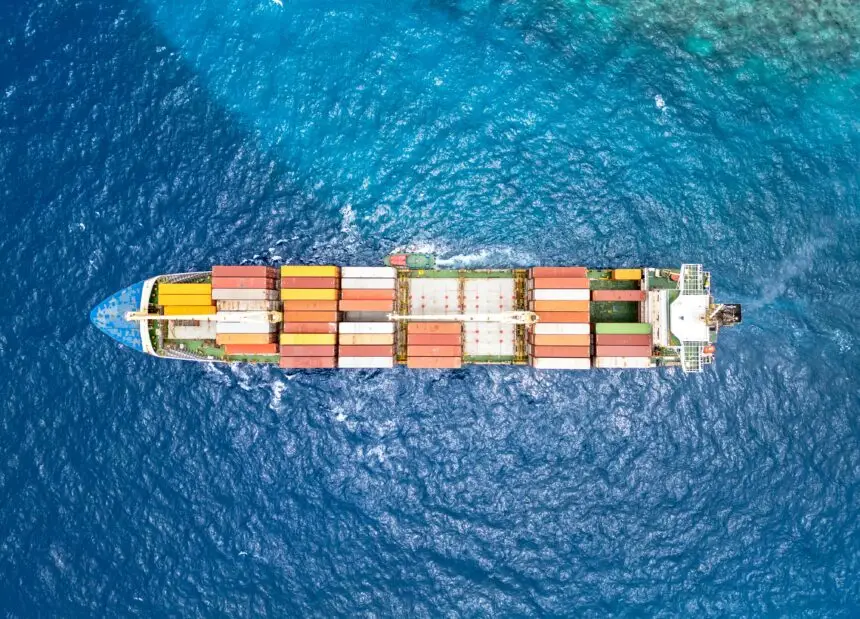The latest and most severe escalation of the China-Japan trade dispute, occurring in late 2025, has been explicitly triggered by political rhetoric, demonstrating that the separation of economics and politics (Seikei Bunri) has all but dissolved.
Taiwan and the Seafood Ban
The flashpoint was a statement by Japanese Prime Minister Sanae Takaichi, who suggested that a Chinese military action against Taiwan could constitute an “existential threat” to Japan, potentially allowing Japanese troops to intervene under its 2015 security laws (1.1, 2.1).
Beijing’s retaliation was immediate, multi-pronged, and highly punitive:
- Seafood Ban: China abruptly suspended all imports of Japanese seafood, escalating a partial ban initially imposed in 2023 over the release of treated wastewater from the Fukushima Daiichi nuclear plant (1.1, 1.3). This move targets one of Japan’s most vulnerable export sectors; before 2023, China and Hong Kong accounted for over one-fifth of Japan’s seafood exports, including premium scallops and sea cucumbers (1.1, 1.2).
- Tourism and Cultural Boycott: China issued travel advisories, leading to the cancellation of an estimated half a million airline tickets and a sharp drop in tourist inquiries (1.4, 1.5). This directly harms Japan’s retail and hospitality sectors, which rely heavily on Chinese visitors. State-owned Chinese banks also reportedly instructed staff to avoid traveling to Japan, and the release of Japanese films and academic exchanges have been postponed (1.5).
- Military Signaling: The economic coercion was accompanied by heightened military and maritime activity, including Chinese Coast Guard ships patrolling the disputed Senkaku/Diaoyu Islands and military drones flying near Japan’s westernmost islands (1.3, 1.4).
China’s use of trade bans in retaliation for political speech underscores a growing global trend where economic tools are weaponized to compel policy shifts from sovereign states (2.1).
📜 Historical Context: The Precedent of Economic Coercion
The 2025 crisis is not an isolated incident but the latest peak in a recurring cycle of political tension translating into economic pressure. The relationship has been shaped by deep historical baggage (e.g., Japan’s wartime conduct) and ongoing territorial disputes.
The Senkaku/Diaoyu Islands Disputes
The most significant precedent for the current crisis occurred in 2010 and 2012 over the disputed ownership of the uninhabited Senkaku Islands (Diaoyu Islands in China) in the East China Sea:
- 2010 Rare Earths Embargo: Following a collision between a Chinese fishing trawler and a Japanese Coast Guard ship, China imposed an unofficial, temporary embargo on rare earth elements (REE) exports to Japan (3.4, 4.5). This action was a profound demonstration of China’s leverage, as Japan’s advanced manufacturing sector (automotive, electronics) was virtually 100% dependent on China for the processing and supply of these critical minerals (2.3).
- 2012 Boycotts: When the Japanese government nationalized the islands, anti-Japanese protests erupted across China, leading to widespread and often violent consumer boycotts of Japanese products, including cars and electronics (3.4). Japanese companies suffered a sharp decline in sales and were prompted to reconsider their supply chain concentration in China.
These incidents established the pattern: when diplomatic tensions rise, China uses targeted economic measures—bans on exports where it holds a monopoly, or mobilization of consumer boycotts where Japan has market penetration—to inflict immediate, measurable economic pain.
🧲 The Supply Chain Vulnerability: Critical Minerals
While the immediate focus of the 2025 crisis is seafood and tourism, the most profound economic threat remains the potential weaponization of critical minerals, particularly rare earth elements (REEs).
The Rare Earths Chokepoint
Japan’s strategy in the global production network is to import components and raw materials from China, process them into high-value, sophisticated components (e.g., permanent magnets, precision ceramics), and then re-export them globally. This strategy leaves Japan critically exposed to an REE embargo:
- Global Dependence: China controls approximately 89% of the global refining capacity for rare earth minerals (4.4). Japan has strategically stockpiled rare earths and sought to diversify sourcing to Australia and other countries following the 2010 shock, but the reliance on China’s complex, specialized processing infrastructure remains the choke point (2.3).
- Status in 2025: As of late 2025, Japan’s Trade Minister confirmed that there were no explicit changes in China’s export control measures on rare earths, even amid the Taiwan tensions (4.1). This stability reflects a complex balancing act: while Beijing retains the “great weapon” (4.5), deploying it would disrupt global supply chains and potentially harm China’s own export-oriented manufacturing base, which relies on demand from countries like Japan.
The threat of an REE ban remains a Sword of Damocles hanging over the entire Japanese manufacturing sector, serving as an implicit deterrent against further political escalation from Tokyo.
🤝 The Deep Economic Interdependence Paradox
Despite the political hostility, the two nations remain deeply and structurally integrated. This economic interdependence is the ballast that prevents political disputes from constantly collapsing into full-scale trade wars.
China as Japan’s Premier Trading Partner
- Scale of Trade: Bilateral trade between China and Japan stands at hundreds of billions of dollars annually, with China being Japan’s largest trading partner by a significant margin (1.4).
- Japan’s Investment in China: Japanese companies like Toyota, Nissan, Sony, and Panasonic have deep, established manufacturing and retail presences within the Chinese domestic market. The jobs and economic activity generated by these Japanese firms are vital to many Chinese cities and provinces.
- Supply Chain Complementarity: Historically, their roles were complementary: China served as the assembly plant and source of raw materials, while Japan provided the high-tech components, machinery, and capital goods. While China is rapidly moving up the value chain to become a competitor in advanced sectors, the reliance on sophisticated Japanese components (e.g., specialized chemicals, semiconductor manufacturing equipment) is still immense (3.3).
As business leaders in Japan have recently stressed, “political stability is the prerequisite for business exchanges,” and both sides have much more to lose from a disrupted economic relationship than they stand to gain from political posturing (2.5, 3.3).
🌍 Global Implications and Supply Chain Decoupling
The recurring trade disputes are compelling both governments and businesses to implement strategies to reduce economic reliance, a trend known as “de-risking” or “ally-shoring.”
Japan’s De-risking Strategy
The severity of the 2010 and 2025 shocks has solidified Japan’s policy to prioritize economic security:
- Diversification and Stockpiling: The government has provided significant subsidies for Japanese companies to relocate manufacturing away from China, primarily to ASEAN nations (Vietnam, Thailand, Indonesia) (3.4, 3.5). This strategy is also applied to critical mineral stockpiling and developing alternative global supply sources (e.g., deep-sea mining exploration) (2.3).
- Security Alignment: Japan is increasingly aligning its economic policy with its security alliances, particularly with the United States, joining efforts to develop reliable, non-Chinese supply chains for semiconductors and other strategic technologies (3.5).
The Impact on ASEAN
The disputes between China and Japan have inadvertently accelerated economic activity in Southeast Asia. ASEAN nations are benefiting as they become the primary destination for relocated Japanese manufacturing and a reliable, neutral ground for both Chinese and Western investment (3.5). This shift is gradually altering the regional production network, diversifying risks but also increasing logistical complexity.
🏛️ Policy Responses and the Future of the Dispute
The immediate future of the China-Japan trade dispute rests on the resolution of the diplomatic row over Taiwan. While the Japanese government has sought to lower the temperature through dialogue, it is unlikely that Prime Minister Takaichi will retract her security statements, meaning the economic coercion will likely persist for the immediate term (1.4).
The Challenge of Dialogue
The challenge for both sides is finding a way to return to the “benign neglect” model, where politically charged issues are shelved to protect mutually beneficial economic ties (3.3). Business communities in Japan are strongly pushing for this return to dialogue (2.5).
However, the pattern of using economic tools for political ends has now been clearly established. This means that even during periods of apparent calm, the threat of sudden trade action—a ban on technology components, a customs slowdown, or a targeted import restriction—will remain a permanent fixture of the bilateral economic relationship.
The ultimate solution involves Japan fully executing its economic security agenda to achieve genuine resilience in critical supply chains, thereby neutralizing China’s most potent economic weapons and forcing future disputes to remain within the realm of rhetoric, rather than devastating economic action.
Source List
- Reuters / Investing.com: China bans Japanese seafood as diplomatic dispute deepens (Report on the seafood ban triggered by PM Takaichi’s Taiwan remarks).
- Washington Post: China punishes Japan’s new leader with harsh words and economic pain (Analysis of Beijing’s use of economic coercion and impact on GDP).
- East Asia Forum: Japan’s plan to restructure global supply chains (Detailed look at Japan’s de-risking strategy, subsidies, and shift toward ASEAN nations).
- Rare Earth Exchanges: China’s 40-Year Rare Earth Playbook: New Study Maps How Beijing Took (and Keeps) Control (Academic-level analysis of China’s dominance in rare earth separation and processing).
- China Daily (via Japan Business Community): Japan’s business community urges dialogue (Report conveying the Japanese business sector’s strong appeal for political stability to protect economic ties).
- U.S.-China Economic and Security Review Commission (USCC): 2025 Report to Congress – Executive Summary (Analysis of China’s expanding economic and coercive tools against its trading partners).

